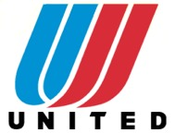Logo
|
|
- For other uses, see Logo (disambiguation).
A logotype, commonly known as a logo, is the graphic element of a trademark or brand, which is set in a special typeface/font, or arranged in a particular, but legible, way. The shape, color, typeface, etc. should be distinctly different from others in a similar market.
| Contents |
Overview



1998_wolympics_logo.jpg

Logo_happy_meal_japanese.JPG
In recent times the term 'logo' has been used to describe signs, emblems, coats of arms, symbols and even flags. At the end of this article several examples of 'true' logotypes are displayed, which may generally be contrasted with emblems, or marks which include non-textual graphics of some kind. Emblems with non-textual content are distinct from logotypes properly so-called.
The uniqueness of a logotype is of utmost importance to avoid confusion in the marketplace among clients, suppliers, users, affiliates, and the general public. To the extent that a logotype achieves this objective, it may function as a trademark, and may be used to uniquely identify businesses, organizations, events, products or services. Once a logotype is designed, one of the most effective means for protecting it is through registration as a trademark, so that no unauthorised third parties can use it, or interfere with the owner's use of it. If rights in relation to a logotype are correctly established and enforced, it can become a valuable intellectual property asset.
Many people believe that a logotype is just a graphic symbol or sign. This is, however, not the way it is defined by graphic designers and by advertising professionals. A logotype consists of either a name or a name and a sign. The images at right show examples of the two kinds of logotypes, so as a single emblem.
While large corporations spend hundreds of thousands of dollars to update and implement their logos, many small businesses will turn to local graphic designers to do a corporate logo.
Brand slogan
Sometimes a slogan is included in the logotype. If the slogan appears always in the logotype, and in the same graphic shape, it can be considered as part of the logotype. In this case it is a brand slogan also called a claim, a tagline or an endline in the advertising industry. The main purpose of it is to support the identity of the brand together with the logotype. The difference between a slogan and a brand slogan is that brand slogan remains the same for a long time to build up the brands image while different slogans link to each product or advertising campaign.
Logo or logotype?
Often the word logo is used instead of logotype. In practice, both terms are synonyms, but the meaning of logotype is specifically what is defined in this article, while logo has other meanings.
History
The origin of logotypes goes back to the 19th century, when industrial manufacture of products became important. The new industrial procedures allowed a much higher output then that of the former handmade products. The new products were distributed in large geographical areas, even nationwide. New competitors appeared from time to time, and the offer of products of a same kind increased notably. At that time, a significant part of the population was still illiterate. The industrial leaders became soon aware that the public would not easily differentiate their product from the same product of their competitors. More and more manufacturers began therefore to include a symbol, sign, or emblem on their products, labels and packages, so that all the buyers could easily recognize the product they wanted.
The manufacturers later began to add the name of the company or of the product to their sign. The name being shaped often in a specific way by each manufacturer, these combined logotypes, which for the first time included sign and name, became extremely popular. During many decades, when a new logo was being designed, owners, advertising professionals, and graphic designers always attempted to create a sign or emblem which, together with the name of the company, product, or service, would appear as a logotype.
Logos today
Today there are so many corporations, products, services, agencies and other entities using a sign or emblem as logotype that many have realized that only a few of the thousands of signs people are faced with are recognized without a name. The consequence is the notion that it makes less sense to use a sign as a logotype, even together with the name, if people will not duly identify it. Therefore, the trend in the recent years has been to use both logos and names, and to emphasize the design of the name instead of the logotype, making it unique by its letters, color, and additional graphic elements.
However, a small product with an emblem sometimes will grow in popularity, especially across areas with differing alphabets; for instance, a name in the Arabic language would be of little help in most European markets. A sign or emblem would keep the general proprietary nature of the product in both markets. In non-profit areas, the Red Cross is an example of an extremely well known emblem or vexillum which does not need a name to go with, though in Muslim countries it is the Red Crescent.
Logo design
Logo design is commonly believed to be one of the most difficult areas in graphic design. It's not just an image, it is the face of an organization, which is the visual representation of a brand. For brand continuity, and because of the expense involved in changing it, a "good" logo is expected not to be too trendy, but ideally last many years before needing a redesign.
A "good" logo;
- is distinctive, and is not subject to confusion with another logo among customers
- is clearly and instantly recognisable, in different contexts, for example
- when presentedd in a small size, at a low resolution or at a distance
- in full-color, but also in black&white, black&white and one spot color, or halftone.
- presented on backgrounds of different color and texture
- printed on products (where the shape of the product may warp the logo's shapes)
- usually includes a brand name
- evokes an emotional response
- associates the brand with positive qualities, in line with the target audience's needs
For certain brands, bold use of primary colors, especially red and yellow, is used to draw attention. This is especially important for logos that are used in signage along roads, where the objective is to attract customers to the immediate location. E.g. McDonalds, Denny's, etc.
For other brands, more subdued tones can communicate dependability, quality, relaxation, etc.
When designing (or commisioning) a logo, practices to encourage are;
- use few colors, limit colors used to spot colors
- avoid gradients as a distinguishing feature
- produce alternatives for different contexts
- design using vector graphics, so the logo can be resized without loss of fidelity
- include guidelines on the position on the page and white space around the logo for consistent application
- do not use a specific choice of third-party font or clip-art as a distinguishing feature
- do not use the face of a (living) human being
- avoid culturally sensitive imagery, such as religious icons or national flags, unless the brand is commited to being associated with any and all connotations such imagery may evoke.
In general there are five types of logos:
- Text plus Image (Iconic Logo / Combination logo)
- Only Text (Wordmark Logo)
- Abbreviation plus Image (Iconic Logo / Combination logo)
- Only Abbreviation (Lettermark Logo)
- Only Image (Graphic Logo / Symbol Logo / Brandmark Symbol)
Examples
The following table shows the names of six well-known companies in the same typeface in all cases. In these examples, recognizing the companies entails reading the name.
| Kellogg's |
Hyatt |
Bankers Trust |
| Pfizer |
Lancôme |
Hertz |
In the next table, the name of these companies is shown in their specific design, their logotype. Due to the design, the color, the shape, and eventually additional elements of the logotype, each one can easily be differentiated from other logotypes. For example, in a supermarket a box of Kellogg's cereals will be seen in the shelf from a certain distance, due to the unique design and the red color of its logotype. The same will be true when one is looking at the airport for the booth of the Hertz Rent-A-Car company. The logotype will be recognized from afar because of its shape and its yellow color.
Other well-known examples are: Apple computer's apple with a bite out of it started out as a rainbow of color, and has been reduced to a single color without any loss of recognition. Coca Cola's script is known the world over, but is best associated with the color red; its main competitor, Pepsi has taken the color blue, although they have abandoned their script logo. IBM, also known as "Big Blue" has simplified their logo over the years, and their name. What started as International Business Machines is now just "IBM" and the color blue has been a signature in their unifying campaign as they have moved to become an IT services company.
There are some other logos that must be mentioned when evaluating what the mark means to the consumer. Automotive brands can be summed up simply with their corporate logo- from the Chevrolet "Bow Tie" mark to the circle marks of VW, Mercedes and BMW, to the interlocking "RR" of Rolls-Royce each has stood for a brand and clearly differentiated the product line.
Other logos that have become global: the Nike "Swoosh" and the Adidas "Three stripes" are two well-known brands that are defined by their corporate logo. When Phil Knight started Nike, he was hoping to find a mark as recognizable as the Adidas stripes, which also provided reinforcement to the shoe. He hired a young student (Caroline Davidson) to do his logo, paying her $35 for what has become one of the most well known marks in the world (she was later compensated again by the company).
Corporate identities today are often developed by large firms who specialize in this type of work. However, Paul Rand is considered the father of corporate identity and his work has been seminal in launching this field. Some famous examples of his work were the UPS package with a string (updated in March 2003) IBM, Goodwill Industries and NeXT Computer.
An interesting case is the refinement of the FedEx logo, where the brand consultants convinced the company to shorten their corporate name and logo from "Federal Express" to the popular abbreviation "Fed Ex". Besides creating a much stronger, shorter brand name, they reduced the amount of color used on vehicles (planes, trucks) and saved hundreds of thousands of dollars in paint costs. Note also, the right pointing arrow in the new logo is a subliminal hint of motion.
See also: Sound logo
External Links
- Logo Design Services Directory (http://www.logoterra.com) - List of logo design companies.
- Logo Design & Brand Identity (http://www.logolive.com) - Samples and information about logo design.
- Brandmarker (http://www.monochrom.at/markenzeichnen/index-eng.htm) - The art group monochrom attempted to evaluate the actual power of commercial brands by making people draw famous logos from memory.
- Brands of the World (http://www.brandsoftheworld.com/) - A logo database of almost every big brand in vector formats. Also working as an exchange project where anybody can post vector logotypes.
- Government of Canada survey (http://www.tbs-sct.gc.ca/fip-pcim/can_e.asp) - A case study on how the Canadian Government logotypes (http://www.pch.gc.ca/logos/english.htm) have affected popular perception of the Canadian federal government.
- Wordmark Info at Lawinfo.com (http://www.gosmallbiz.com/lawinfo/questionview.asp?id=10951&se=4) - Explains the similarities and differences between wordmarks (logotypes) and trademarks or copyrights (at least under U.S. law).
- Corporate Identity Documentation (English) (http://www.cidoc.net/)
- A Website about Corporate Identity (English) (http://users.ncrvnet.nl/mstol/)
- Corporate Identity Portal - (German) (http://www.ci-portal.de/)
- Brandchannel - Online exchange about branding (English) (http://www.brandchannel.com/)cs:Logo
de:Firmenlogo et:Logo fr:Logo publicitaire nl:Beeldmerk ms:logo pl:Logo simple:Logo sl:Logotip zh:标志

